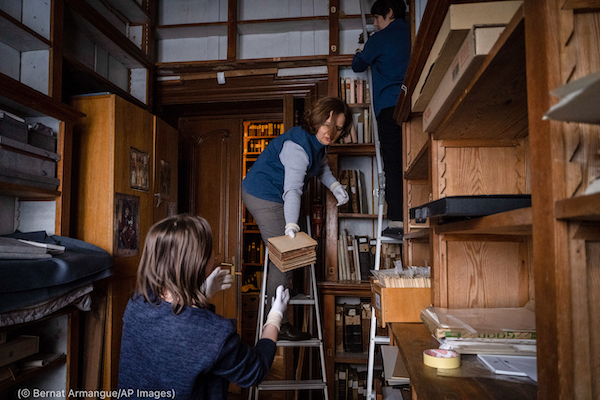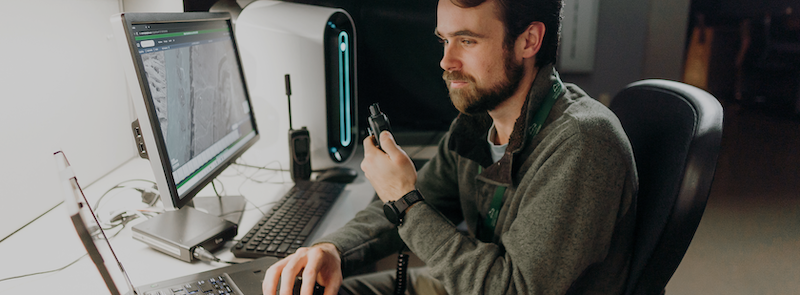During armed conflicts, cultural heritage assets are among the first elements of a community to be targeted or accidentally destroyed. As cultural heritage constitutes a fundamental part of the “soul” of human societies, safeguarding and preserving it should lie in the centre of collective efforts undertaken in challenging times. In this context, we focus on the Ukrainian cultural heritage protection and preservation experience by exploring the multitude of initiatives carried out both in Ukraine and abroad. What distinguishes our research from other relevant activities, is that it seeks to delve into initiatives developed through open innovation practices that maximise citizen engagement in them.

Workers at the Andrey Sheptytsky National Museum in Lviv on March 4 move rare manuscripts and books. (© Bernat Armangue/AP Images)
The term open innovation was initially coined by Harry Chesbrough, who referred to “the use of purposive inflows and outflows of knowledge to accelerate internal innovation, and expand the markets for external use of innovation, respectively” (Chesbrough & Crowther 2006). Thus, in its original form, the term is grounded in economics (Chesbrough himself is a business innovation scholar) and the party that benefits from the inflows and outflows of knowledge is the corporate sector.
The term open innovation has been used recently in a broader context by, among others, the European Commission’s publication “Open Innovation, Open Science, Open to the World - a vision for Europe (European Commission 2016) from which we borrow the definition: “Open Innovation is to open up the innovation process to all active players so that knowledge can circulate more freely and be transformed into products and services…” (ibid, p. 11).
What makes citizen involvement relevant to the open innovation process is that “Open innovation is about involving far more actors in the innovation process, from researchers, to entrepreneurs, to users, to governments and civil society” (ibid p. 88).
The collection of resources presented here are part of the EU funded eCHOIng project, which describes open innovation as “a set of digitally enhanced participatory activities whose main forms are”:
- hacktivism (activism by means of hacking for a social purpose, such as hackathons/datathons, 24H sprints);
- maker movement;
- citizen science an
- crowd initiatives such as crowdfunding and crowdsourcing.
Accordingly, in eCHOIng, open innovation is characterised by 3 particular elements:
- participatory practice
- degree of openness (open data, open access, open review)
- creation of a result (artifact, prototype, intellectual result) that may be marketable
Finally, two of the authors of this online collection of resources, Katerina Zourou and Stefania Oikonomou, have recently released a position paper on “Resilience and action-taking: a vision of crowd initiatives for cultural heritage preservation in an armed conflict”. The authors aim to emphasise the need to undertake immediate action to help protect cultural heritage under threat of destruction or annihilation, thus pointing to the hindrances as well as incentives that shape action-taking during challenging times.
As openly expressed in the paper’s authors’ statement:
“This text is an invitation to explore what citizen engagement – and more broadly, humanity – is positively capable of doing to preserve cultural heritage in the face of a disaster, thus manifesting the value that citizens can bring in a fractured world.”
You can read the position paper here.

Hayden Bassett with the Cultural Heritage Monitoring Lab in Virginia uses advanced satellite imagery to monitor at-risk cultural heritage sites in Ukraine. (© Virginia Museum of Natural History)